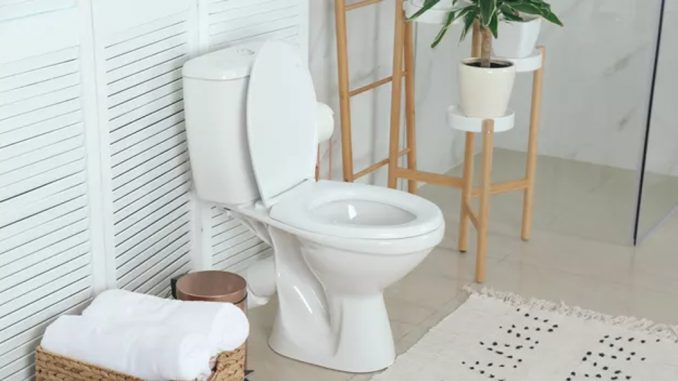
Porcelain is one of the most commonly found materials in bathrooms, used for everything from fittings to your toilet – and although a hard substance, porcelain is not averse to suffering from the kind of hole or crack which requires repair.
Made from clay and other materials, porcelain is fired at high temperature in a kiln and then glazed. It can become damaged in different ways, from the impact of something heavy falling on it or through the stresses of being part of a working bathroom.
One of the most frequent repair questions we are asked regarding porcelain is how to a seal a crack in a toilet soil pipe.
Any leak in a fitting carrying wastewater is bound to be of concern. The good news is a DIY repair can be quick, easy and cost-effective.
Repairing a porcelain toilet soil pipe with epoxy putty
The most straightforward way to repair a rack in a porcelain toilet soil pipe is with epoxy putty. However, there are some considerations to make before opting for this as your method for sealing the pipe.
Most epoxy putties will not bond effectively to wet or damp surfaces. Although a soil pipe only contains water when a toilet is flushed, the inside of particularly thin cracks may prove impossible to dry properly.
Which is why we recommend the use of an underwater epoxy putty formulated for wet surface repair, like Superfast Aqua Potable Water.
Superfast Aqua PW comes in a pre-formatted stick with the correct ratio of resin to hardener already measured. To use, you simply cut off the amount of putty required to fill the crack and knead by hand.
Superfast Aqua PW will turn to a uniform white colour after around five minutes to indicate successful mixing, at which point it is pushed into the crack.
Within 10–15 minutes, it will begin to harden from a soft material into one as hard as steel. A full cure is achieved in 24 hours, after which the toilet crack will be permanently filled and sealed.
The success of an epoxy putty repair depends on how much Superfast Aqua PW can be forced into the crack. For a hairline crack which may be too difficult to fill, a silicone pipe repair tape provides an alternative method.
Repairing a porcelain toilet soil pipe with a silicone repair tape
Silicone pipe repair tapes are self-amalgamating, meaning the tape will fuse together as it is stretched and wrapped around a pipe to form a solid, watertight rubber band.
The best tapes are those which offer maximum stretch for a high-pressure repair. Wrap & Seal Pipe Burst Tape for example stretches by three times its length.
With the tension this creates over a hole or crack, a repair can be built using multiple tapes fusing to each other with pressure resistance to 30bar.
Applying Wrap & Seal is easy. You anchor the tape a little to the side of the crack, stretch it by as close to 300 percent as possible, and wrap around one full revolution of the pipe.
This will anchor the tape, which will then fuse together with each further revolution. You apply with a 50 percent overlay (Wrap & Seal comes with a handy white line down the middle as a guide) until reaching the leak, and then apply directly over the crack until the roll runs out.
Protecting the repair with a composite wrap
Further protection can be given to the repair by overwrapping either the epoxy putty or silicone tape with a composite pipe repair bandage, such as SylWrap HD.
The resin within the bandage is activated by water, sparking a chemical reaction which will cause the bandage to turn rock hard.
Whilst the resin is activated, the wetted bandage is wrapped and smoothed around the initial leak sealant. Once cured, a composite repair bandage provides an impact resistant layer which reinforces the pipe.

Leave a Reply